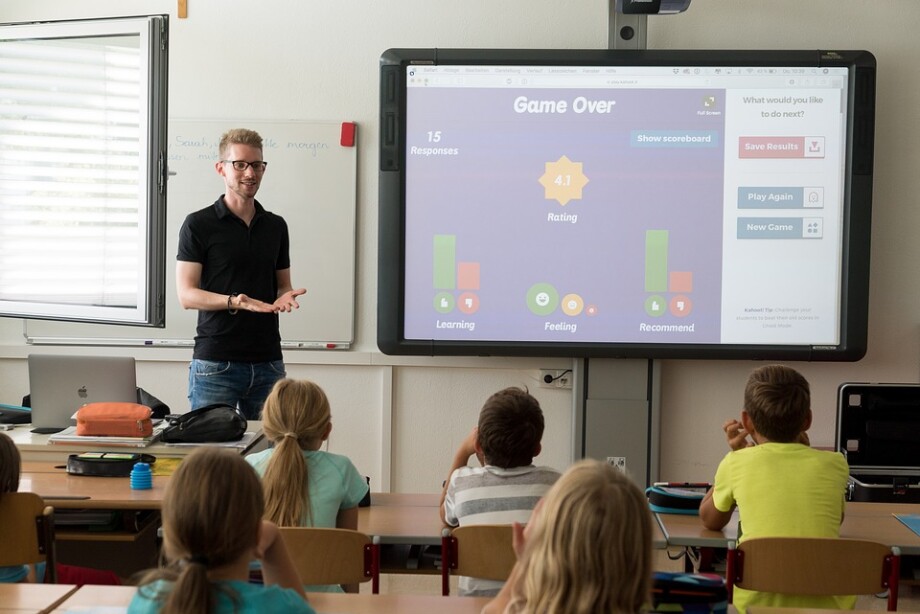Use of authentic materials has always been a controversial topic to discuss, and there are many opinions whether we can/should/must use these materials with low levels and especially kids. The main question is HOW we do this? The answer is usually quite simple — just grade the tasks, but in a real classroom it doesn’t always work and may discourage children or make them bored and…puzzled. The reasons can be different: the task is complicated, the video is too long, children try to grasp the meaning of every single word.
First, let’s start with the definition. What is “authentic?” According to OED, it means “of undisputed origin; genuine”. What does it mean when we apply this to English? The material hasn’t been changed, adapted.
What is essential when you teach kids? The material must be meaningful, fun, engaging, children must have a reason to communicate about this. Videos are a great tool to “fresh up” your coursebooks and especially CLIL lessons. Below I’ll share some authentic videos I use when I teach young learners.
1. Youtube channels
Let’s say you have a “food” topic. I like the video about school lunches around the world. When we have a “food” lesson, I play this video and ask children to remember and name as much food as they can. I do not ask them to name ALL food. Then we discuss what lunches they like and why; what lunches are similar or different to their school lunch; what kind of lunch they would like to have at school. These and this one are some other great videos, where children try food around the world. We can also discuss what food they see, what food they’ve tried and would (not) like to try, what food looks tasty, etc. And here you can find recipes and use these videos to discuss food for special occasions or just regular breakfast, lunch, etc. You can ask if your students can or know how to cook something; what food they have in their fridge at home; what food their parents buy, what food is their favourite, etc.
These videos ignite the discussion as they are real-life topics, they’re about something familiar to young learners, it’s easy to personalise the language and students can see children of their age. Additionally, they can name food in English and apply what they’ve just learnt to real-time discussions.
Depending on your students’ level you can find an appropriate video or cartoon with already made tasks: practise grammar, vocabulary or pronunciation. It mostly suits for A2+ levels.
Moreover, you can find a certain word or phrase for students to listen to it in different contexts and with different accents.
2. Cartoons
Cartoons are also a type of authentic materials. Recently I’ve used parts of “Madagascar”, “Zootopia” and “The secret life of Pets” in animals’ topics. These videos can be used as a warm-up or lead-in to set the discussion. We watch a fragment from movies, children say what animals they see, what animals they (want to) have or (don’t) like. You can also assign an animal to each child and they must jump/stand up/mime this animal when they see it in the movie.
I’ve also used “Inside Out” cartoon to practise adjectives of emotions, mime them and to personalise the language as well: ask learners when they feel sad or happy, what they do; if they help their friends when they’re angry; if they associate these emotions with these colours; how would they feel if they put themselves in Riley’s shoes.
Another great cartoon is “Monsters, Inc.” I use it to practise body parts. You can think of a monster and children ask questions to guess, for example, “Has it got 5 eyes?” Or they can describe a monster for others to guess. Ask learners who they think is the scariest monster and why. Encourage them to create their own monsters too.
3. Songs and clips
Video clips are another great authentic material to use and develop learners’ listening skills. For instance, for the “weather” topic I’ve used “Let it go” from Frozen. You can ask children to feel in the gaps with “weather” words or give different learners various “weather” flashcards. They have to hold them up when they hear, let’s say “snow” or “wind, etc. In addition, when you use a clip, not just an audio track, visuals help learners to grasp the meaning.
There are many ways to use authentic materials. My main tips are:
- The videos must be short, not more than 2 min.
- The task should be appropriate to the level.
- Pre-teach key vocabulary.
- Emphasize children do not have to understand everything.
Authentic materials develop children listening skills, boost discussions, improve students’ confidence when dealing with lots of unknown words; they are easier to apply to real-life situations and it’s easier to personalise the language through them which motivates young learners a lot.






 Вероника Аветисян
Вероника Аветисян 
 Маргарита Аветисян
Маргарита Аветисян 


